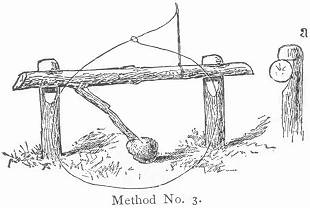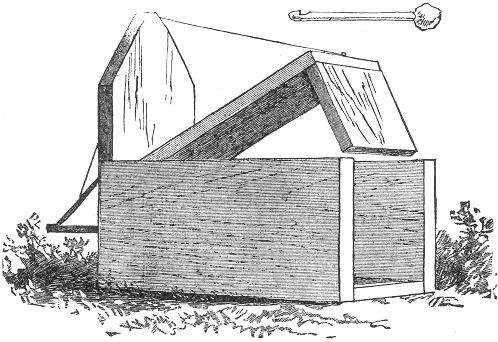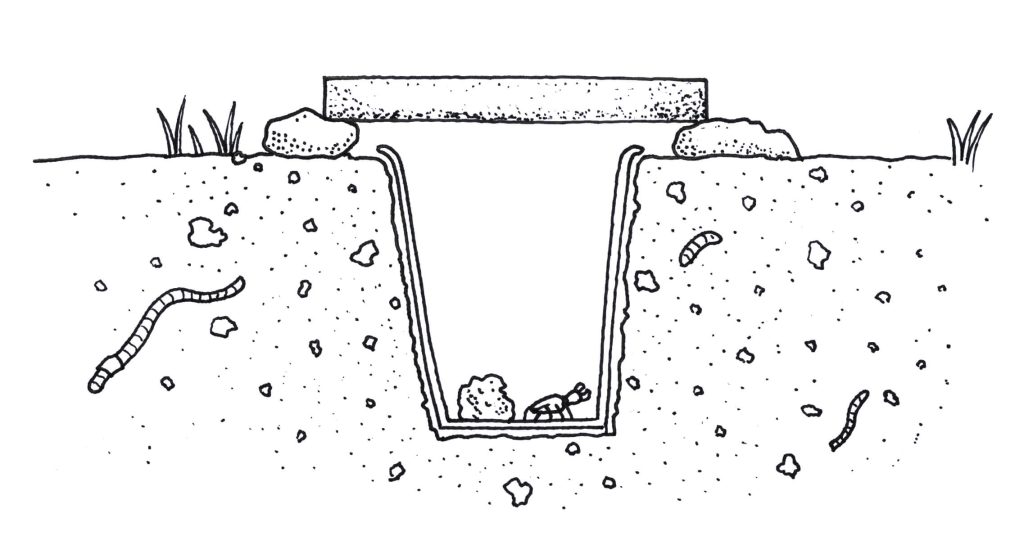Your cart is currently empty!

Ultimate Guide on How to Trap Rabbits

Table of Contents
Introduction
Hey there, fellow hunters! If you’ve ever found yourself scratching your head, wondering why those pesky rabbits seem to elude your traps season after season, you’re not alone. I’ve been there, trust me. With years of chasing these swift-footed critters under my belt, I’ve come to realize that understanding our furry friends is the key to a successful hunt. Now, I’m not just talking about knowing where they like to nibble on grass or where they burrow. I mean truly understanding their behavior as the seasons change. You see, just like us, rabbits have their own routines and habits that shift with the changing weather. And if you’re looking to up your trapping game, you’ve got to get inside their heads a bit. But don’t fret! I’ve compiled all my years of small game hunting wisdom into this guide, tailored for hunters of all skill levels. Whether you’re just starting out or you’ve been at this for years, there’s always something new to learn. So, let’s embark on this journey together and discover the secrets of trapping rabbits for every hunting season!
Understanding Rabbit Behavior Across Seasons
Spring Behavior: The Bustling Breeding Season
Ah, spring! The flowers bloom, the birds sing, and rabbits? They’re in full-on breeding mode. This means you’ll notice a significant uptick in their activity. They’re not just hopping around for fun, though. They’re searching for mates and prime nesting spots. If you’re looking to set traps during this season, focus on areas near thickets and brushy fields. These are prime real estate for rabbits looking to start a family. And with their increased activity, your chances of a successful trap are pretty high.
Summer Behavior: Night Owls and Heatwaves
Summer brings warmth, long days, and… nocturnal rabbits? That’s right! To escape the scorching heat, our furry friends become more active during the cooler nights. They’re smart like that. Their favorite hangouts? Lush, green patches where they can munch on their favorite foods. If you’re setting traps in the summer, consider placing them near these feeding spots. But remember, with the heat, it’s crucial to check your traps frequently to ensure any caught rabbits aren’t suffering in the sun.
Fall Behavior: Winter’s Coming!
As the leaves turn golden and the air gets crisp, rabbits shift their focus to one thing: survival. Fall is all about preparing for the cold months ahead. This means they’re on a foraging frenzy, trying to fatten up for winter. It’s like their version of stocking up on canned goods and cozy blankets. This increased foraging makes fall one of the best times to set your traps. Look for areas with an abundance of food sources, like gardens or crop fields. The promise of a tasty meal is often too hard for a rabbit to resist.
Winter Behavior: Snow Bunnies and Burrows
Winter is a challenging time for both hunters and rabbits. The cold is biting, and the snow can be a real game-changer. Rabbits cope by burrowing deep into the ground, creating intricate tunnel systems to shield them from the cold. These burrows are their winter sanctuaries. Trapping during this season requires a bit more strategy. The snow can hide your traps, but it can also reveal rabbit tracks, giving away their routes and favorite spots. Focus on placing traps near the entrances of their burrows or along these snow-marked paths.
And there you have it! A year in the life of a rabbit. By understanding their seasonal behaviors, you can adapt your trapping techniques to be more effective, no matter the time of year.
Choosing the Right Trap for the Job
Snare Traps: The Classic Rabbit Catcher

When it comes to trapping rabbits, the snare trap is an old favorite among many hunters. Simple yet effective, it works by catching the rabbit as it moves, tightening around its neck or body. The key to a successful snare? Location, location, location! Place them along rabbit trails, near their feeding areas, or close to their burrows. As for design, a loop made of thin wire or strong cord works best. Keep it about 3-4 inches in diameter, and set it at a height that aligns with a rabbit’s neck. Remember, a well-placed snare can be a game-changer!

Box Traps: Catch and Release, the Humane Way

For those who prefer a more humane approach, box traps are the way to go. These traps are designed to capture rabbits alive, without causing them harm. The benefits? You get to decide the rabbit’s fate, whether it’s relocation or another purpose. When baiting a box trap, think like a rabbit. Fresh veggies or fruits can be irresistible. Once you’ve got a rabbit in the trap, it’s essential to handle and release it with care, ensuring minimal stress to the animal.
Pitfall Traps: A Deep Dive into Trapping

Pitfall traps, as the name suggests, involve digging a deep pit that rabbits can fall into but can’t escape from. While effective, they come with their own set of challenges. On the plus side, they can catch multiple rabbits at once. However, they pose a risk to other wildlife and even pets. If you’re considering this method, ensure the pit is deep enough so rabbits can’t jump out but not so deep that it becomes a hazard. Always cover the top with a lightweight material to prevent unintended captures.
Safety and Ethical Considerations: Hunt with Heart
Above all, it’s crucial to remember that we’re dealing with living creatures. Ensuring minimal suffering should be every hunter’s top priority. This means checking your traps regularly. A trapped rabbit left unchecked can suffer from stress, dehydration, or injuries. Additionally, always be aware of the legalities surrounding rabbit trapping in your area. Different regions have different regulations, and it’s our responsibility to stay informed and hunt within these bounds. Ethical hunting isn’t just about following the rules; it’s about respecting the animals and the environment we share with them.
In the world of rabbit trapping, knowledge is power. By understanding the various traps at our disposal and the ethical considerations that come with them, we can make informed decisions that lead to successful and humane hunts.
Tips and Tricks for Hunters of All Skill Levels
Beginners: Laying the Groundwork
Hey there, newbie! Welcome to the thrilling world of rabbit trapping. Let’s start with the basics. Setting a trap might seem straightforward, but there’s an art to it. First, always choose a location where you’ve noticed rabbit activity. Look for signs like droppings, chewed vegetation, or tracks. When setting your trap, ensure it’s stable and won’t topple over. Safety first! Speaking of safety, always handle traps with care, especially snares or any trap with moving parts. And as for understanding rabbit signs? Keep an eye out for well-trodden paths (these are rabbit highways!) and burrow entrances. These signs are like the neon arrows of the rabbit world, pointing you to prime trapping spots.
Intermediate Hunters: Leveling Up Your Game
Alright, you’ve got some experience under your belt, and you’re ready to up the ante. Let’s talk bait. While fresh veggies are a classic choice, consider leveling up with apple cider or even vanilla extract. These scents can be irresistible to rabbits. Now, about those rabbit trails: they’re not just random paths. They’re the result of repeated use, and understanding them can give you insights into rabbit behavior and movement patterns. Place your traps along these trails, but always change things up. Rabbits are observant, and if they notice their buddies getting trapped, they might start avoiding that path. So, keep them guessing by optimizing and rotating your trap placements.
Expert Hunters: Mastering the Craft
For the seasoned pros out there, you know that every hunt is unique. Challenging terrains, like dense woods or swampy areas, require a keen eye and adaptability. Lightweight traps that can be easily anchored or modified are your best friends in these environments. And those elusive rabbits that seem to dodge every trap? Time to channel your inner detective. Look for subtle signs, like fur caught on branches or faint tracks in soft soil. These can lead you to hidden burrows or feeding spots. Lastly, don’t be afraid to get creative with your traps. Innovative modifications, like adding scent lures or adjusting the trigger sensitivity, can make all the difference in catching that cunning rabbit that’s eluded you for so long.
In the end, whether you’re just starting out or you’ve been at this for years, there’s always something new to learn in the world of rabbit trapping. Every hunt is a lesson, and every rabbit is a challenge waiting to be met.
Related Questions
What are the best baits for rabbit traps?
When it comes to baiting those wily rabbits, think fresh and fragrant. Fresh vegetables like carrots, lettuce, or cabbage are classic choices that rarely disappoint. But if you’re looking to up your game, consider using apple slices or even a dab of apple cider. Some hunters swear by vanilla extract too. The key is to find something that’ll tickle their curious noses and lure them in!
How often should I check my traps?
Great question! Ideally, you should check your traps at least once a day, if not more. Rabbits are lively creatures, and if they’re trapped for too long, they can get stressed or injured. Regular checks ensure that any captured rabbits are dealt with promptly, reducing their distress. Plus, frequent checks increase your chances of a successful catch, as you can adjust your strategy on the go.
Are there any legal restrictions on rabbit trapping?
Absolutely! Laws and regulations on rabbit trapping vary from place to place. Some areas might have specific seasons for trapping, while others might have restrictions on the types of traps you can use. It’s super important to familiarize yourself with local wildlife regulations before setting out any traps. Always remember: ethical hunting respects both the animals and the law.
How can I ensure a humane trap and release?
Kudos for thinking about the well-being of the rabbits! To ensure a humane trap and release, first, use live traps like box traps that don’t harm the rabbit. When you check the trap, approach quietly to reduce stress for the captured bunny. Wear gloves to protect both you and the rabbit, and gently release it away from roads or known predators. If you’re relocating the rabbit, choose a suitable habitat with ample food sources. And always handle with care and kindness!
Summary
Well, there you have it, my fellow hunting enthusiasts! From the fresh blooms of spring to the chilly embrace of winter, understanding the ever-changing world of rabbits is crucial. It’s been quite the journey, hasn’t it? We’ve delved deep into the heart of rabbit behavior, explored the myriad of traps at our disposal, and shared some invaluable tips that I’ve picked up over the years. Remember, hunting is as much about respect and understanding as it is about skill. It’s our responsibility to ensure that our practices are ethical and humane. As you venture out, armed with this newfound knowledge, I hope you approach each hunt with a sense of curiosity and a thirst for continuous learning. The world of small game hunting is vast and ever-evolving, and there’s always a new trick to master or a behavior to observe. So, keep those eyes sharp, stay safe, and happy hunting! Here’s to many successful seasons ahead. Cheers!

Herb has been a longtime lover of the outdoors. Whether it be hunting, camping, fishing or just getting outside to reset. Proud father and animal lover. Bourbon anyone?

by
Tags:
Comments

Categories
- Big Game Hunting (301)
- Deer (202)
- Reviews (3)
- Shooting (16)
- Slingshot (1)
- Small Game Hunting (42)
- Upland Hunting (126)
- Waterfowl Hunting (3)





Leave a Reply